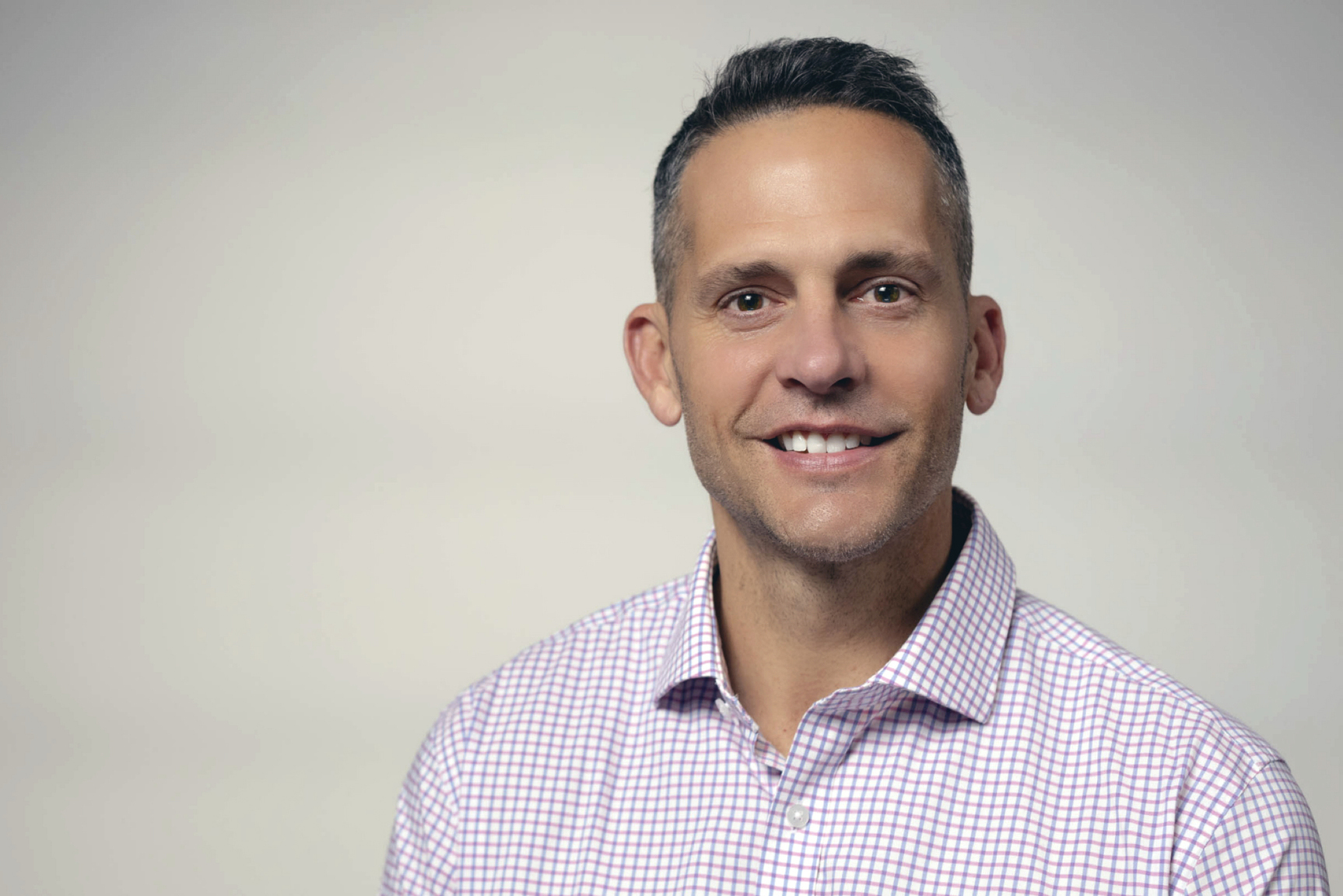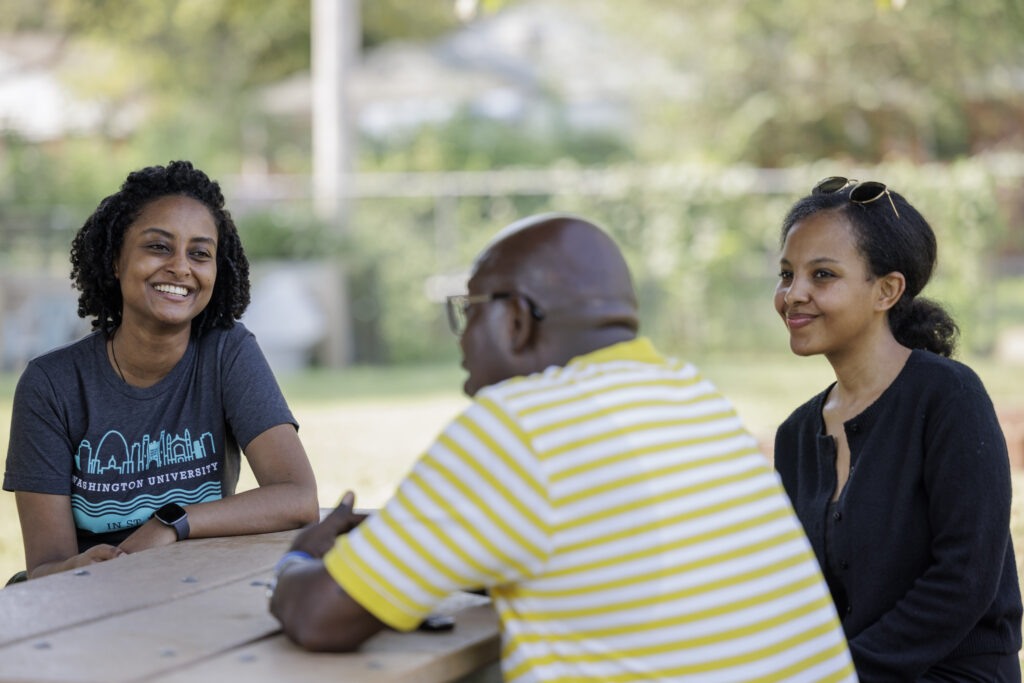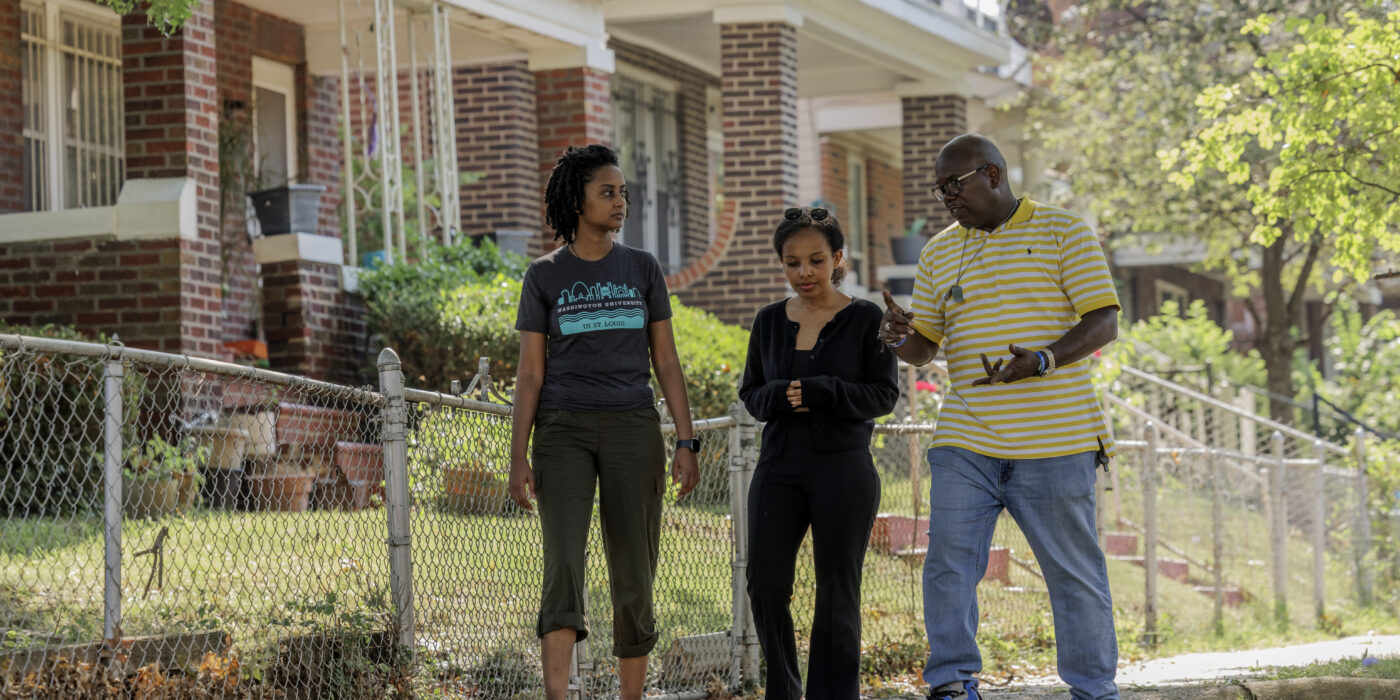In May, WashU Olin Business School graduate students presented a sophisticated tool they developed to measure neighborhood vibrancy to a group of civic leaders, business owners and community members in the Wells-Goodfellow neighborhood of north St. Louis.
The tool is a user-friendly dashboard and reporting template that translates complex data — including measurable quantitative data as well as qualitative data collected in interviews with community residents — into actionable insights. The goal is to equip leaders with the information they need to make equitable revitalization possible, measurable and sustainable. The students were Ewnet Azerefegne and Israel Bacha, along with Moan Lu and Huixi Zhang, who earned their master’s degrees in May.
“There’s a lot of interest in revitalizing neighborhoods like Wells-Goodfellow, but without localized data and measurable benchmarks, it’s difficult for community leaders and investors to know if their investments will generate the intended results — or if they’re even working on the problems that matter most to the community,” said Azerefegne, who is enrolled in the dual master of public health and master of business administration program at Washington University in St. Louis.
The project was commissioned by North of Delmar, a nonprofit committed to improving quality of life, promoting economic opportunity and driving sustainable development in the St. Louis area by fostering collaboration among nonprofits, corporations, philanthropists and universities.
The effort was among more than 60 projects students completed during the spring 2025 semester for local startups, nonprofits and global firms through Olin’s Center for Experiential Learning (CEL). CEL students put their classroom learning into practice, working on real-world problems under the guidance of Olin faculty. The CEL offers courses for graduate and undergraduate students, designed to develop key business competencies, including project management, critical thinking, problem formulation, and leadership and communication skills.
While most CEL projects promise the possibility of future internship or career opportunities, this pro bono project was different, Azerefegne said. But the sense of pride she felt knowing that her work contributed to her community in a meaningful way made it all worthwhile, she added.
Defining, measuring ‘vibrancy’
To measure neighborhood vibrancy, students collected data over six domains: housing; health and safety; arts and recreation; economic development; transportation; and employment and training opportunities.
Notably, that data included both quantitative data — such as crime rates and housing affordability — and qualitative data, such as area residents’ perceptions of safety and community trust. The six categories were then weighted based on relative importance to community members. Together, these data points formed a neighborhood-level “vibrancy score.”
“‘Vibrancy’ is not just about whether a place looks statistically better on paper, it’s about whether people experience their neighborhood as a place where they can live well, connect meaningfully and see a path toward a better future,” said Bacha, who is also enrolled in WashU’s dual master of public health and master of business administration program.

“Anybody can access public data, but there are limitations to that information. It doesn’t provide a complete picture,” said Michael Wall, academic director of experiential learning and curricular advancement at Olin. “What makes this tool unique is that it considers how the community thinks and feels about their neighborhood — without that insight, it would fall short.”
Eric Marquardt, of North of Delmar, said the student-created model would help the nonprofit reframe how it measures success.
“The nonprofit community typically measures success in terms of services provided. This model is different in that it’s focused on the achievements made to help improve the community. It’s a different mindset. It’s not about whether we had two events or provided $X in services. It’s about whether the overall health of the community is improving, with the ultimate goal being self-sufficiency,” Marquardt said.
Marquardt said using vibrancy as the guideline and having a plan for the community also would help civic leaders focus on long-term solutions, even while addressing more immediate challenges.
Informing investments to rebuild north city
Just 10 days after the students’ presentation, a powerful EF3 tornado tore through the St. Louis community, including the Wells-Goodfellow neighborhood. As devastating as the tornado was, Wall said he hopes that recently approved disaster funding will enable north St. Louis, which was already distressed, to rebuild and come back stronger.
With proper resources, community leaders could use the tool the students created to inform their investment decisions, Wall added.
‘With this tool, community leaders can understand what matters most to the community and then make investment decisions that are going to drive the greatest return against those metrics.’
Michael Wall
“With this tool, community leaders can understand what matters most to the community and then make investment decisions that are going to drive the greatest return against those metrics. They can also track the impact of these investments,” he said.
But that will require buy-in from either the local government or nonprofit groups.
“We have given them a blueprint of the resources and processes needed to accurately and completely measure the vibrancy of any neighborhood in St. Louis. The next step is finding an investor who will provide the necessary resources to implement this and iterate over time,” Wall said.
The good news is that the cost to pay contractors to collect data and build a website for community members and investors to monitor the progress should be relatively low.
Hassan Shariff, who heads the Wells-Goodfellow Neighborhood Association, said that it can be difficult to get private funders to pay for planning because they want more tangible things they can see and touch. But the planning process — in this case, building out the model — is important because it gives them a roadmap of where they want to go and how to get there. And the community’s desires and expectations inform the model.
That initial investment could pay in dividends for future fundraising, too.
“With the model, we’ll be able to offer donors a chance to participate in and receive ongoing feedback about how their investment in Wells-Goodfellow is impacting the community. Donors want accountability, and this model provides just that,” he said.

Using data to drive prosperity in St. Louis
The neighborhood vibrancy project builds upon two other projects completed by Olin’s Center for Analytics & Business Insights. The first project studied relocating Cortex. The second project, completed in 2024, focused on how to attract and retain talent in the St. Louis region.
“All three of these projects have produced clear, validated data-driven metrics on the things that matter most to people in their community — whether you live in Wells-Goodfellow, whether you want to relocate your company to St. Louis, or whether you want to just stay and work in St. Louis. What matters most to any community member is the same.”
These projects also align with WashU’s commitment to be “in St Louis, for St. Louis,” Wall added.
“These projects are important to us because we realize the importance and value of uplifting everyone and every community in St. Louis. Everybody wants to do the right thing. Everyone wants to rebuild these communities. Everyone wants a more inclusive and equitable St. Louis. But there’s been little consensus on what steps are needed to accomplish this goal,” Wall said.
Collectively, these projects have helped eliminate that barrier.
“They’ve given us greater clarity to say, This is what success looks like, and here are the metrics that we can use to measure it. And if we can create a reporting mechanism, we can work to see which investments are actually improving outcomes — and which ones aren’t,” he said.
Ultimately, Wall said they are trying to help St. Louis leaders make better decisions to drive the region’s prosperity — decisions informed by data insights. Leaders throughout St. Louis have taken notice.
“One of the most rewarding parts of the students’ presentation was seeing the excitement from local civic and business leaders in the room. These are problems they’ve been working on for years,” Wall said. “They understand the challenges facing Wells-Goodfellow better than anyone. But they haven’t had the right tools to measure and track their success. The tool the students created could do just that.”



